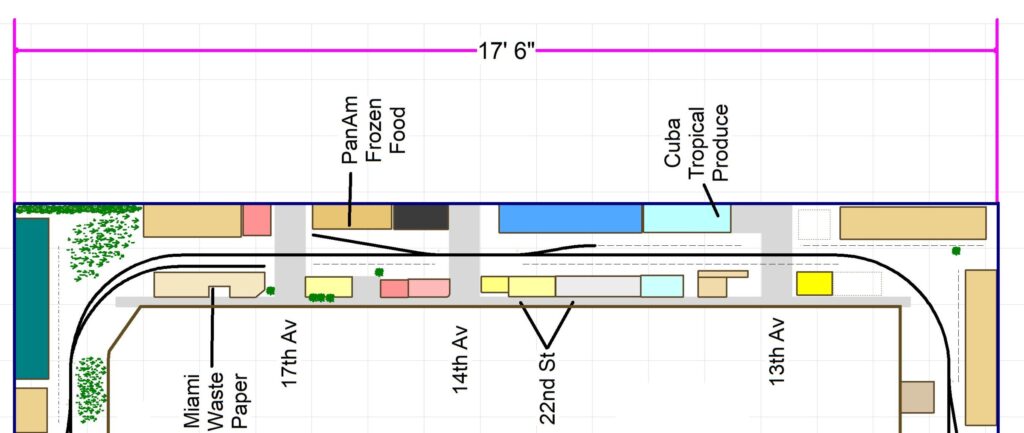
A view westward down 22nd Street from 13th Avenue. Peaceful. Optimistic. Unique from an architectural, surface texture, and color standpoint. Numerous visits have given me a sense of its essence, what makes it what it is. If I could successfully capture that in model form, I’d feel like I was “there” whenever I walked into the layout room. I feel that I’ve hit the target. It only took 15 years but I eventually got there. I’ll often just walk into the layout room to give myself a brief 15-minute vacation to Miami.
It’s been written that the most difficult human endeavor is deep thought. I’ll add self-awareness as close second. You can’t design a fulfilling model railroad if you don’t know what you want it to do for you. It sounds easy enough. Personally I don’t think it is. Making it more difficult is that our interests shift back and forth over the years. People immediately jump to track plan sketches simply because it’s easy and fun. We skip conceptual planning because a) we don’t understand its order in the hierarchy (plan first. design second) b) we don’t grasp its importance and c) introspection is a lot harder than sketching.
As for myself, I’ve come to the point where my overarching goal is that when I walk into my layout room I want to feel like I’m in a place that elicits positive thoughts. Miami, LA, Brooklyn, Baltimore? So many positive memories and hopefully more to come.
Next in line as for what the layout’s “job” is? I enjoy the building process. My ratio of build vs. ops time is probably 50:1
Finally, I do like operations and wouldn’t want a layout that didn’t support that. Here’s a vital metric we all need to dial in. What’s your hourly number? How long do you want your sessions to last? If it’s thirty to forty-five minutes why put so much effort into shoehorning in enough spurs to support a six-hour session? Only needing to be entertained for less than an hour takes a lot of design pressure off. Somewhat related is how often you plan to have guests over for sessions and how long those sessions will be. Again, for most of us, we don’t have formal sessions that often. When you do host others, believe me, your guests will privately thank you if those sessions don’t go beyond two hours. One hour to socialize before. two hours running. Dinner/socializing after. If you’ve judiciously chosen your industries, it doesn’t take many spurs to keep your visitors going for those two hours.


This week I finished the 22nd Street corridor shelf run. It’s 17′ 6″ long and only has two industries, Pan Am and Miami Waste Paper. Furthermore, each of those two industries only got a car every year or so. I rarely switch them. I know that other areas of the layout will provide any necessary operational entertainment needs so there wasn’t any need to worry about working spurs into this section. I was free to use the entire run as negative space and a platform to establish the “essence of place”.

It’s common for a modeler to study a prototype and sub-consciously resort to “scanning for spurs”. Look for the spurs. Found them. Delete everything else (top diagram). However, it’s the “everything else” that contributes the majority of a place’s overall look. Take a breath, and allow ample space for industries that are no longer rail-served. You’ll have enough to be very satisfied. You won’t be bored. I promise.